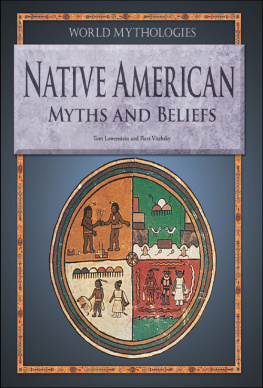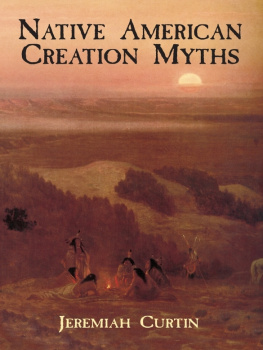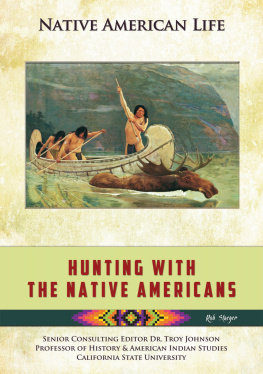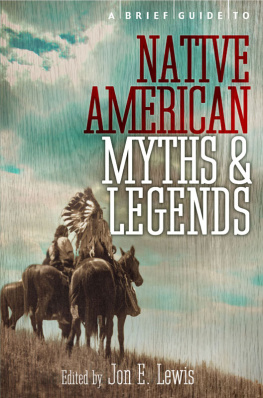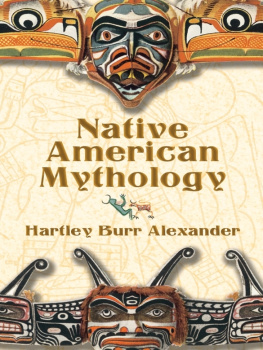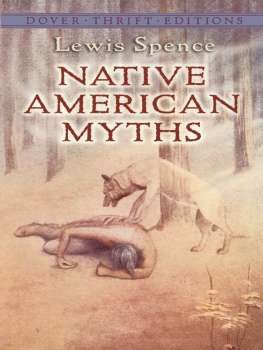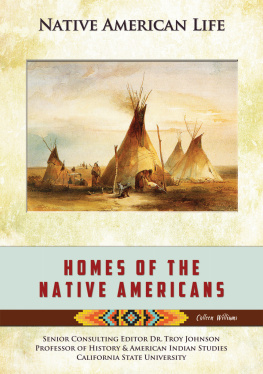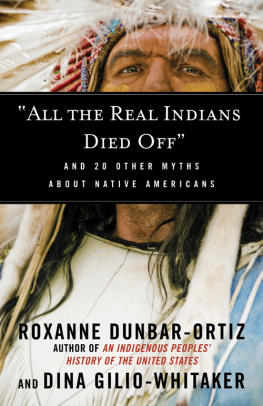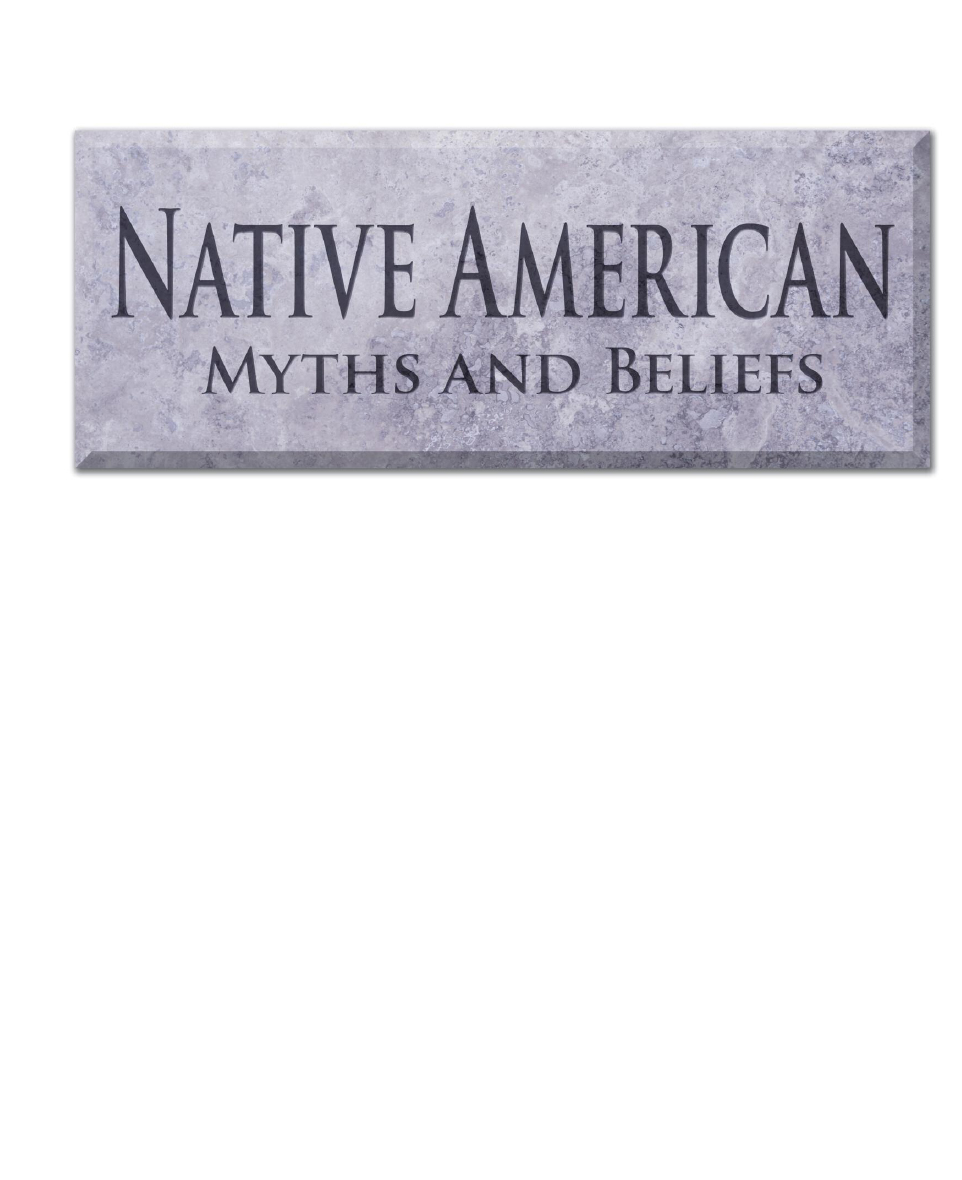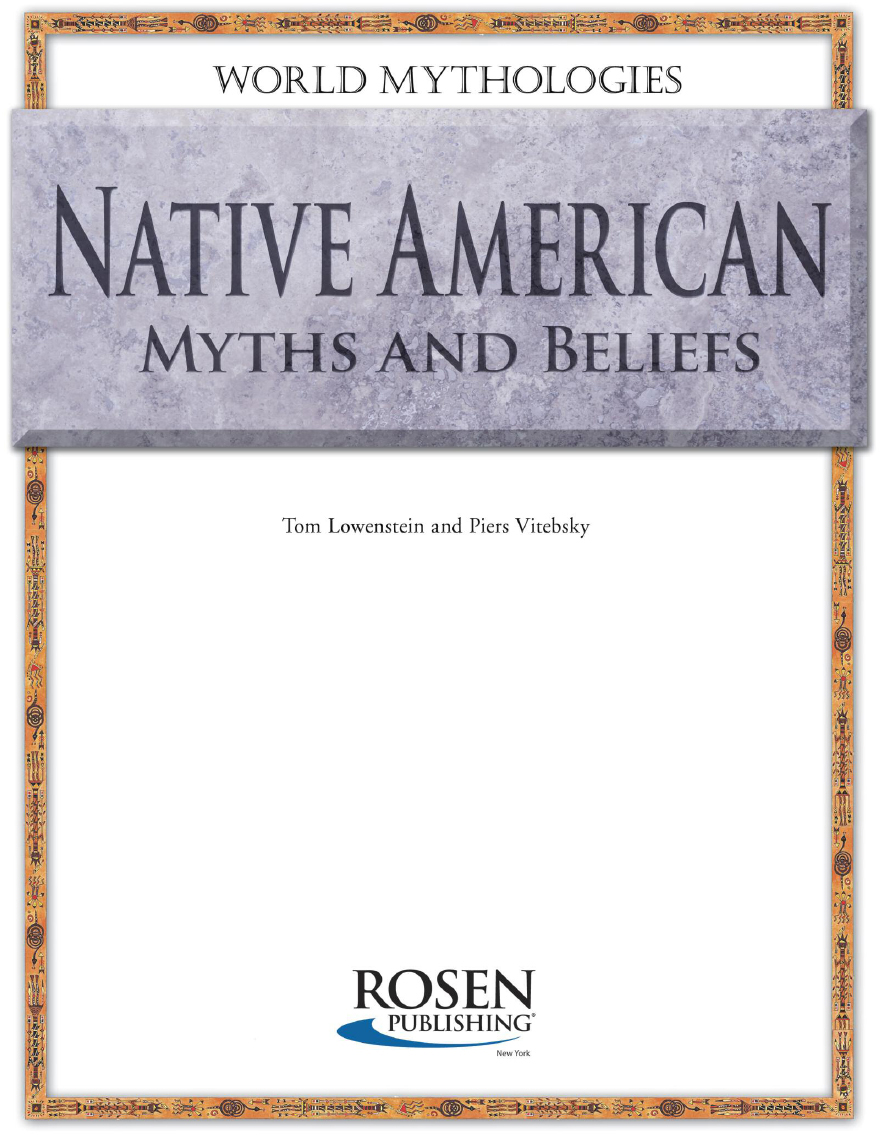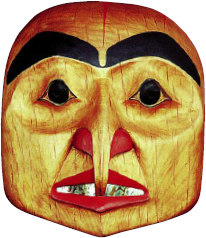This edition published in 2012 by:
The Rosen Publishing Group, Inc.
29 East 21st Street
New York, NY 10010
Additional end matter copyright 2012 by The Rosen Publishing Group, Inc.
All rights reserved. No part of this book may be reproduced in any form without permission in writing from the publisher, except by a reviewer.
Library of Congress Cataloging-in Publication Data
Lowenstein, Tom.
Native American myths and beliefs/Tom Lowenstein, Piers Vitebsky.
p. cm.(World mythologies)
Includes bibliographical references and index.
ISBN 978-1-4488-5992-4 (library binding)
1. Indian mythology. 2. Indian cosmology. 3. IndiansRites and ceremonies. I. Vitebsky, Piers. II. Title.
E59.R38L68 2012
299'.7dc23
2011036349
Manufactured in the United States of America
CPSIA Compliance Information: Batch #W12YA: For further information, contact Rosen Publishing, New York, New York, at 1-800-237-9932.
1997 Duncan Baird Publishers
Photo Credits:
The publisher would like to thank the following people, museums and photographic libraries for permission to reproduce their material. Every care has been taken to trace copyright holders. However, if we have omitted anyone we apologize and will, if informed, make corrections in any future edition.
Key: t top; b bottom; c centre; l left; r right
Abbreviations:
AMNH: American Museum of Natural History
BAL: Bridgeman Art Library
BBHC: Buffalo Bill Historical Center, Cody, Wyoming
JBT/ECT: John Bigelow Taylor/The Eugene and Clare Thaw Collection.
BM: British Museum
NMAA: National Museum of American Art
MNAI: Museum of the North American Indian
WFA: Werner Forman Archives
WFA/Portland Art Museum; Frans Lanting/Zefa; John Anderson Collection, Smithsonian Institution (44258); WFA/Maxwell Museum of Anthropology; 8-9 The Detroit Institute of Arts, Gift of Mr and Mrs Pohrt (1988.226); WFA/C. Pohrt Collection. BBHC; JBT/ECT (T106); Corbis/Smithsonian Institution (20003881); 14l WFA/Maxwell Museum of Anthropology; 14rWFA; 15l Tony Stone Images /Richard Cooke III; 15r Corbis/Bettman; Library of Congress (LC-USZ62- 602498); Philbrook Museum of Art (1951.8); 18tl Ohio State Historical Society; 18tr Images Colour Library; 18b Hutchison Library; 19t Spectrum; 19bl WFA; 19br Images Colour Library; JBT/ECT (T177); BAL/NMAA; WFA/RL Anderson Collection, BBHC; 23t WFA/Portland Art Museum; 23r WFA/Cleveland Museum of Art; WFA/ Schindler Coll. NY; 25WFA/Smithsonian Institution; Wheelwright Museum of the American Indian, Santa Fe, New Mexico (P-1A-8); Roland Reed/Kramer Gallery, DBP Archives; Hutchison Library; BAL/MNAI; BAL/NMAA; Peter Furst/Museum fr Vlkerkunde, Berlin; JBT/ECT (T60); Peter Furst/Priv.Coll.; JBT/ ECT (T86); University Museum Archives, University of Pennsylvania (obj: 38736); WFA/BM; 37WFA/Smithsonian Institution; WFA/Haffenreffer Museum, Brown University, Rhode Island; BAL/NMAA; Peter Furst/Smithsonian Institution; Corbis/Library of Congress, Roland Reed (LC-USZ62- 48427); 44t Peter Furst/Priv.Coll.; 44b Richard Cooke III/Tony Stone Images; 4445 Ashmolean Museum, Oxford (neg EM4); 45t America Hurrah; 45r Stephen Myers/AMNH (3822(2)); Images Colour Library; Images Colour Library; Ohio State Historical Society; BAL; Corbis; 52WFA/Provincial Museum of Victoria, BC; Corbis; BAL/Princeton Museum of Natural History; WFA/AMNH; JBT/ECT; Stephen Myers/AMNH (3837(3)): National Museum of the American Indian (2336); WFA/NMAI; Peter Furst Priv.Coll.; WFA/Museum of Anthropology, University of BC; Burke Museum (117); M. Holford; Peter Furst/The Detroit Institute of Arts; Peter Furst/Lowie Museum of Anthropology, University of California at Berkeley; M. Holford; Peter Furst/Priv.Coll.; WFA; Corbis/Library of Congress; JBT/ECT (T43); Peter Furst/Priv. Coll.; Peter Furst/Priv.Coll.; America Hurrah; 80l America Hurrah; 80rWheelwright Museum of the American Indian, Santa Fe; 81WFA/BBHC; 82-83 JBT/ECT (T185); BAL; 84WFA; WFA/Field Museum of Natural History, Chicago; BAL; Peter Furst/Priv.Coll.; State Historical Society of North Dakota (SHSND 12004); Peter Furst/Priv. Coll.; Peter Furst/Priv.Coll.; BAL; BAL; Gordon Gahan/National Geographic Image Collection/Getty Images; Peter Furst/Smithsonian Institution; Tony Stone Images; BAL; 100c Peter Furst/Priv.Coll.; 100b BAL; 100-101 JBT/ECT (T49); 101t WFA/BM; 101b State Historical Society of North Dakota (SHSND 941); Robert Harding Picture Library; Paul Macapia/Seattle Museum of Art (91.1.124); 104t Robert Harding Picture Library; 104b Robert Harding Picture Library; Royal Anthropological Institute, London (RAI 2075); Peter Furst/Priv.Coll.; AMNH (41184); Peter Furst/Priv. Coll.; Ohio State Historical Society; Special Collections Division of the University of Washington Libraries (NA3151); 112WFA/Portland Art Museum; Peter Furst/Priv.Coll.; Library of Congress/Edward S. Curtis (LC-USZ62-101185); WFA /Provincial Museum of Victoria, BC; AMNH (42298); Canadian Inuit Art Information Centre, Ottawa (PAN23PR7613); Peter Furst/Priv.Coll.; WFA/Musuem fr Vlkerkunde, Berlin; Stephen Myers/AMNH (3847(2)); Corbis/Library of Congress; Smithsonian Institution (86-2842); WFA/Field Museum of Natural History, Chicago; Bryan & Cherry Alexander; 125WFA/BBHC; WFA/Glenbow Museum, Alberta; Philbrook Museum of Art/Richard West (1949.20); America Hurrah; JBT/ECT (T86); America Hurrah; 132l BAL/BM; 132rc BAL; 132rb BAL; 133tl M. Holford/BM; 133tr BAL/BM; 133b BAL; BAL; BAL; Peter Furst/Priv. Coll.; Tony Stone Images
Contents
A wooden mask from the Pacific Northwest Coast.
THE INDIAN WORLD
For decades, the Lakota Sioux of South Dakota had fiercely resisted white encroachment on their ancestral homelands, but by the harsh winter of 1890 they were becoming increasingly beleaguered. Three years earlier, the US President had been granted wide-ranging powers to detribalize Native Americans, and in 1889 the break up of the Great Sioux Reservation began. The proud nation that had crushed Custers Seventh Cavalry at the Battle of Little Big Horn in 1876 was faced with disaster.
In the midst of such depredation, just one desperate hope of salvation remained: in 1889 a Paiute holy man named Wovoka had prophesied the deliverance of the Indians from white domination. The peoples dead ancestors would bring this about, so to ensure their resurrection Wovoka had instituted a ceremony known as the Ghost Dance. A revivalist movement based on it found fertile ground among the demoralized Sioux and other nations of the Plains. So zealous were its followers that they even donned special shirts, believing them to be impervious to bullets. The Sioux chief Sitting Bull had been skeptical at first, but later lent his support. Feared by the whites, the veteran leader had thus become the figurehead of a ritual that he never personally took part in.
On December 15, 1890, a devastating blow fell on the Sioux. As policemen recruited from among the very people who had once fought alongside Sitting Bull tried to arrest him at Standing Rock Reservation, fighting broke out. At the end of a brief but bloody skirmish, the legendary warrior lay dead. He was buried without ceremony two days later.

